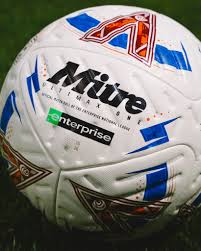Eastleigh FC: The Journey and Recent Developments

Introduction
Eastleigh Football Club, founded in 1946, has become a significant entity in the English football landscape, particularly within non-league circles. With its growing fanbase and competitive spirit, Eastleigh FC represents a thriving community that showcases the passion for football in the region. The club’s progress in recent years is noteworthy, making it a relevant topic not just for fans, but also for those interested in the evolution of grassroots football.
Recent Performance
As of October 2023, Eastleigh FC is competing in the National League, the fifth tier of English football. Their season started promisingly, with several key wins that demonstrate the team’s solid performance under the leadership of manager Lee Bradbury. The club managed to secure a notable victory against competitors, earning them crucial points as they aim for a higher ranking this season. Reports suggest that the team has focused on strengthening their defence and enhancing their attacking strategies, resulting in a more cohesive unit on the pitch.
Key Players and Contributions
Among the notable players, striker Paul McCallum stands out, leading the goal-scoring charts for the club. His experience and skill are pivotal to Eastleigh’s attacking threats, providing the team with a competitive edge in matches. Furthermore, several youth players are being integrated to bolster the squad depth, aligning with the club’s commitment to nurturing local talent and ensuring sustainable growth.
Community Involvement
Eastleigh FC is not just about football; it plays a vital role in the local community. The club regularly engages with fans and residents through various initiatives, including charity events and community outreach programmes. This emphasis on community involvement helps forge a strong connection between the club and its supporters, which is crucial for its long-term success.
Looking Ahead
As the season progresses, the focus for Eastleigh FC will likely be on maintaining momentum and striving for promotion. With a dedicated fanbase and strategic management, there is a sense of optimism about the club’s potential to ascend further in the football hierarchy. The emphasis on youth development and community ties continues to resonate, ensuring that Eastleigh FC remains a notable presence in the tapestry of English football.
Conclusion
Eastleigh FC represents more than just a football team; it embodies the spirit and passion of its community. The club’s recent successes and ongoing projects highlight its importance within the local area and the broader sporting landscape. As Eastleigh FC continues to push for success, the coming months will be crucial for the team’s ambitions and the community that supports it.
